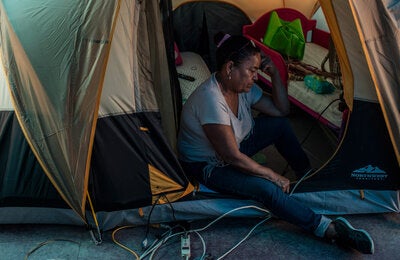
More than 4,600 health facilities are participants in PAHO/WHO's "Save lives: clean your hands" campaign
Washington, D.C., 6 May 2013 (PAHO/WHO) — Nearly 1,200 hospitals and other health facilities in Latin America and the Caribbean and more than 3,400 in North America are calling on patients and family members to join healthcare workers in promoting hand hygiene to help reduce healthcare-associated infections.
The call to action is part of the Pan American Health Organization/World Health Organization (PAHO/WHO) campaign "Save lives: clean your hands," originally launched in 2009. Globally, more than 15,700 health facilities representing over 9 million health workers in 168 countries have registered to participate in the on-going campaign.
Healthcare-associated infections are a major cause of illness and death around the world and add significantly to healthcare costs. The most common of these are urinary tract and surgical site infections, pneumonia and infections of the bloodstream. On average, at least 7% of hospitalized patients in developed countries and 10% in developing countries acquire a healthcare-associated infection, and the proportion is much higher—30% to 100%—among critically ill and vulnerable patients in intensive care units.
More than half of healthcare-associated infections could be prevented if caregivers properly cleaned their hands at key moments during patient care.
According to WHO's Clean Care is Safer Care Program, proper hand hygiene means using alcohol-based hand rubs or washing hands with soap and water if they are visibly dirty. When working with patients, hand hygiene should be performed at five key moments:
- before touching a patient
- before clean and aseptic procedures (e.g., inserting devices such as catheters)
- after contact with body fluids
- after touching a patient
- after touching patient surroundings.
Greater public awareness and patient participation are key to enhancing patient safety. Many health facilities educate and encourage patients and their families to participate in hand hygiene. According to a new survey conducted by WHO and the University of Geneva Hospitals Collaborating Center on Patient Safety, patient participation is a useful strategy for improving hand hygiene and creating a positive patient safety climate in the facilities implementing it.
Patients and their family members can participate by:
- asking for information about existing initiatives that involve patients at the health facility
- asking health workers who are about to touch them to clean their hands, and thanking them when they do
PAHO/WHO also invites health facilities to take action on monitoring hand hygiene practices and providing feedback to health workers—both essential elements of successful strategies to reduce healthcare-associated infections.
PAHO, founded in 1902, is the oldest international public health organization in the world. It works with its member countries to improve the health and the quality of life of the people of the Americas. It also serves as the Regional Office for the Americas of WHO.



